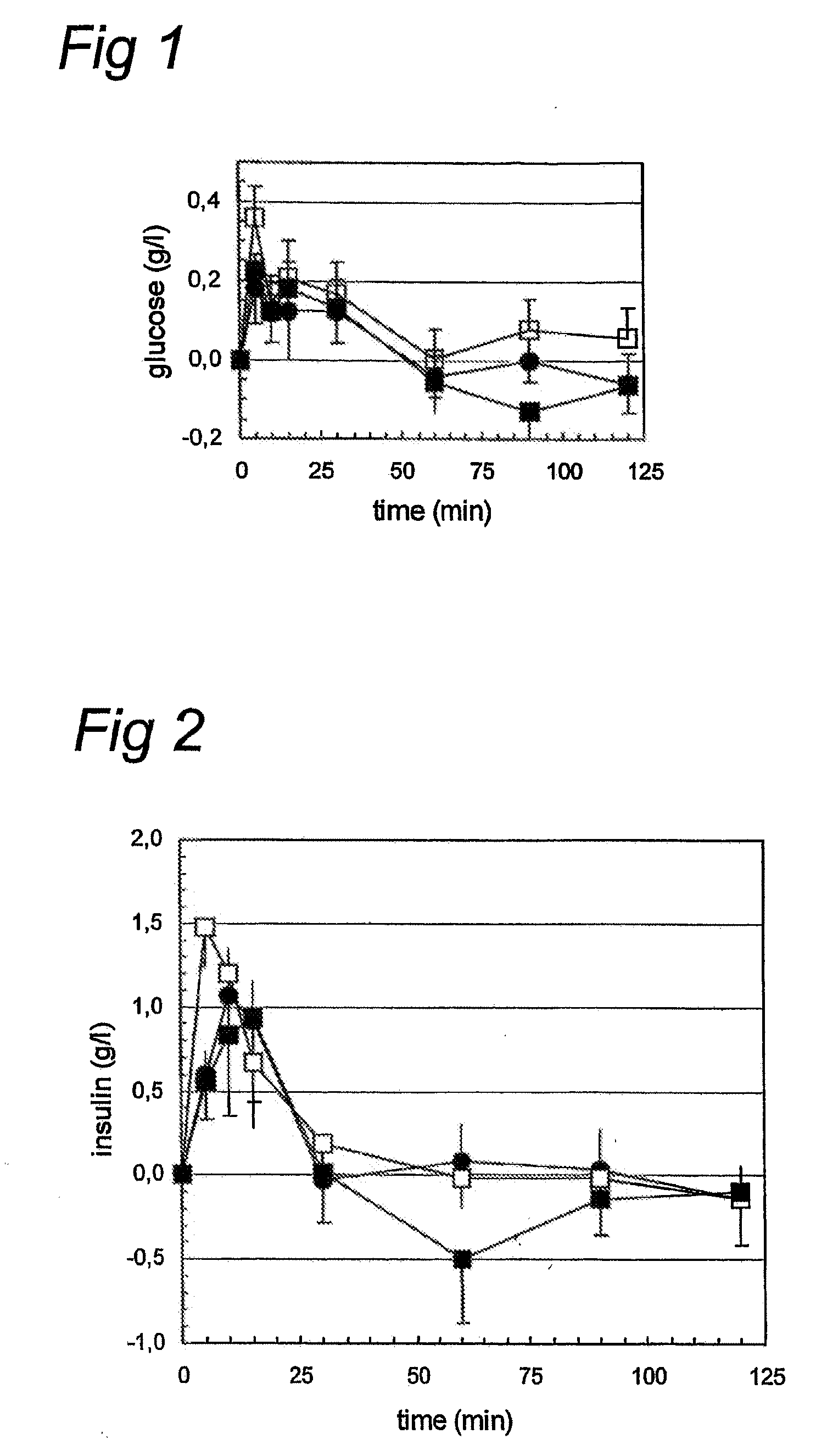Infant Nutrition With Protease Inhibitor
a protease inhibitor and infant formula technology, applied in the field of nutrition, can solve the problems of undesirable effects of infant formula feeding, human milk feeding, and increased post-prandial insulin levels, and achieve the effects of sufficient plasma amino acid levels, low post-prandial insulin levels, and reduced post-prandial glucose levels
- Summary
- Abstract
- Description
- Claims
- Application Information
AI Technical Summary
Benefits of technology
Problems solved by technology
Method used
Image
Examples
example 1
Animals
[0076]20 adult male Wistar rats (aged 10 weeks at the start of the experiment) were housed individually. The animals had ad libitum access to water and food (Standard Rat Chow, Harlan). The animas received a permanent canula in the jugular vein during surgery under isoflurane / N2O / O2 anaesthesia, to enable stress-free repeated blood sampling.
Treatment:
[0077]After a 4 h fasting period, 10 animals were fed 2 ml of a milk composition. Three different compositions were tested in a cross-over design (experiments separated by one week).
1 human breast milk
2 Nutrilon® 1
[0078]3 Nutrilon® 1 with 1 mg protease inhibitor (Soy bean chymotypsin and trypsin inhibitor, Sigma T9777).
[0079]The composition of Nutrilon® 1 is given in table 1. Subsequently, blood samples (200 μl) were collected in heparinised chilled tubes at t=0, 5, 10, 15, 30, 60, 90, and 120 minutes after feeding. Subsequently, plasma was separated after centrifugation (10 min, 5000 rpm) and stored at −20° C. until analysis.
Mea...
example 2
[0088]A composition (Nutrilon 1®, Nutricia, Zoetermeer, The Netherlands) comprising per 100 ml:
Energy: 67 kcalProtein:1.4 g cow' milk protein, ratio whey / casein 8 / 6Digestible carbohydrates7.5 g, of which 7.3 g lactoseFat3.5 gSaturated1.5 gMonounsaturated1.5 gPolyunsaturated0.5 g, of which 0.4 g LA, and 0.07 g ALANon digestible,0.4 g TOS and polyfructosefermentablecarbohydrateszinc gluconate3.5 mgcholine7.6 mgtaurine6.3 mg
example 3
[0089]A composition (Nutrilon 2®, Nutricia Zoetermeer, The Netherlands) comprising per 100 ml:
Energy:77 kcalProtein:1.49 g cow' milk protein, whey / casein4 / 15 wt / wt.Digestible carbohydrates9.9 g, of which 6.6 g lactoseFat3.3 gSaturated1.4 gMonounsaturated1.4 gPolyunsaturated0.5 g of which 0.37 g LA and 0.07 gALANon digestible, fermentable0.4 g TOS and polyfructosecarbohydrates choline8.3 mgEgg white trypsin inhibitor5.0 mg(SigmaT2011)
PUM
| Property | Measurement | Unit |
|---|---|---|
| Weight | aaaaa | aaaaa |
| Weight | aaaaa | aaaaa |
| Fraction | aaaaa | aaaaa |
Abstract
Description
Claims
Application Information
 Login to View More
Login to View More - R&D
- Intellectual Property
- Life Sciences
- Materials
- Tech Scout
- Unparalleled Data Quality
- Higher Quality Content
- 60% Fewer Hallucinations
Browse by: Latest US Patents, China's latest patents, Technical Efficacy Thesaurus, Application Domain, Technology Topic, Popular Technical Reports.
© 2025 PatSnap. All rights reserved.Legal|Privacy policy|Modern Slavery Act Transparency Statement|Sitemap|About US| Contact US: help@patsnap.com

